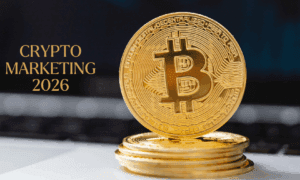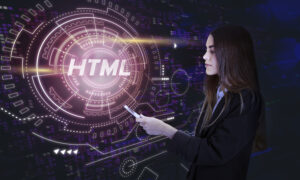Step into the future, where connectivity transcends the confines of our smartphones and laptops. The epoch of Internet of Things (IoT) technology has dawned upon us, ushering in a transformative era that reshapes our lifestyles, professional landscapes, and how we interact with the world around us. From smart homes to autonomous vehicles, IoT is forging the path toward a seamlessly interconnected world. Join us in this enlightening exploration of the future of connectivity, as we delve deep into how IoT is revolutionizing industries, elevating efficiency, and opening doors to boundless innovation. So, prepare yourself for an exhilarating journey into the realm of IoT technology.
Introduction to IoT Technology
The Internet of Things, known as IoT, constitutes a network of interconnected devices and sensors designed to collect and share data about their surroundings. By harnessing the power of the internet and artificial intelligence, IoT devices offer fresh perspectives and capabilities across various domains, from homes and businesses to urban infrastructure and beyond.
Though still in its nascent stages, IoT possesses the potential to revolutionize our way of life and work. In the years ahead, we will witness an ever-growing number of devices connecting to the internet, transforming our ordinary objects into reservoirs of data and insight.
Diverse Array of IoT Devices
IoT devices manifest in diverse forms and sizes, ranging from simple sensors to intricate machinery. Here are some of the most prevalent categories of IoT devices:
Smartphones and Tablets: Perhaps the most ubiquitous IoT devices, smartphones, and tablets are equipped with a plethora of sensors for data collection and connectivity features that enable them to interface with other devices and the internet.
Wearables: Wearables, such as fitness trackers and smartwatches, have gained immense popularity. These devices, worn on the body, often incorporate built-in sensors to monitor various health metrics.
Connected Home Devices: Tailored for domestic use, connected home devices encompass items like smart thermostats, security cameras, and door locks. These gadgets frequently link to home networks and can be remotely managed via smartphones or tablets.
Vehicle Telematics: In the automotive sector, vehicle telematics employs IoT technology, encompassing features like GPS tracking, remote diagnostics, and hands-free communication. Many contemporary automobiles now come equipped with these functionalities as standard features.
Advantages and Disadvantages of Embracing IoT
The Internet of Things (IoT) stands as a web of interconnected devices and sensors, collecting and disseminating data about their surroundings. These devices, spanning from fitness trackers to industrial machinery, carry the potential to reshape our lives, work, and leisure activities.
However, akin to any nascent technology, IoT bears its share of advantages and disadvantages. Let’s delve into some of the pros and cons of this thrilling innovation:
Advantages:
Enhanced Understanding of Patterns and Behaviors: IoT device-generated data offers unparalleled insights into our daily lives. For instance, by scrutinizing data from connected fitness trackers, we can tailor personalized advice for each user.
Automation: Linking devices to the internet facilitates the automation of everyday tasks. This can encompass setting up home automation systems to turn off lights and appliances when rooms are vacant or deploying sensors in industrial settings to alert workers of machinery maintenance needs.
Heightened Efficiency: IoT systems can curtail operational expenses by enabling real-time resource monitoring and the early detection of potential issues.
Disadvantages:
Security Vulnerabilities: As more devices join the internet, the opportunities for hackers to compromise sensitive data or take control of systems expand. Businesses must prioritize robust network security measures, including strong passwords and firewalls, to safeguard confidential information.
Privacy Concerns: Most individuals desire assurance that their personal data remains private. Yet, the use of IoT devices can entail companies gaining access to vast amounts of personal data without explicit consent. The potential for data misuse, including selling it on the dark web or deploying it in targeted advertising campaigns, raises ethical concerns.
Cost Implications: Establishing and maintaining an IoT system can prove financially demanding for businesses, particularly in ensuring security and compliance with privacy regulations.
Privacy Concerns in the IoT Landscape
Technology, a double-edged sword, can simplify our lives and heighten connectivity while also encroaching on our privacy and disrupting our daily routines. This latter aspect becomes especially pronounced in the context of the Internet of Things (IoT).
IoT devices incessantly amass data about us, often without our awareness or consent. This data encompasses everything from our daily routines to intimate personal particulars. Given the interconnected nature of these devices, data sharing can occur easily with other devices and systems, including those overseen by corporations and governments.
This scenario raises profound apprehensions regarding privacy and security. In the wrong hands, this data could be exploited for financial, emotional, or even physical harm. Even when trust is vested in the organizations responsible for collecting and storing this data, there’s no guarantee it will remain impervious to hackers. Cybercriminals often target IoT devices due to their susceptibility.
So, how can we guard against these risks? Unfortunately, there’s no facile solution. However, we must begin by demanding increased transparency from IoT device manufacturers and advocating for robust security measures to safeguard our data. Only then can we reap the benefits of this technology without relinquishing our privacy.
Illustrative Use Cases for IoT
IoT’s potential applications span a broad spectrum of industries and environments. Here are a few examples demonstrating how IoT can be employed in diverse contexts:
Healthcare Industry: IoT sensors can track patients’ vital signs and promptly alert medical staff in the event of a health crisis.
Manufacturing Sector: Production line machinery fitted with IoT sensors can monitor performance and output, enabling real-time adjustments to the production process.
Food and Beverage Industry: IoT temperature sensors deployed throughout the supply chain ensure products remain at optimal temperatures, preserving quality.
Smart Homes: IoT devices govern lighting, security systems, thermostats, and appliances, offering residents enhanced control and energy efficiency.
Emerging Trends in the IoT Landscape
The Internet of Things (IoT), though in its infancy, already exerts a profound influence on global industries and businesses. As more devices connect to the internet, the demand for superior connectivity and data management solutions intensifies.
One pivotal emerging trend in the IoT realm is the ascent of low-power wide-area networks (LPWANs). Tailored to provide long-range connectivity for devices transmitting small data payloads over extended periods, LPWANs find applications in IoT domains such as smart meters, environmental monitoring, and security systems.
Another notable trend in the IoT landscape is the growing adoption of edge computing. Edge computing facilitates data processing and analytics at or near the data collection source, reducing latency and enhancing overall system performance.
The IoT market, characterized by heightened competition, witnesses an increasing number of vendors offering novel products and services. This competition is likely to usher in lower costs and more comprehensive solutions for consumers.
In Conclusion
IoT technology promises an array of benefits for individuals and organizations, including heightened efficiency, cost reduction, and enhanced safety and security measures. As the global count of connected devices continues to soar, it becomes increasingly imperative to ensure the security and reliability of IoT networks. The future of connectivity holds immense promise, but it necessitates prudent navigation to maximize innovative potential while preserving personal safety.





























